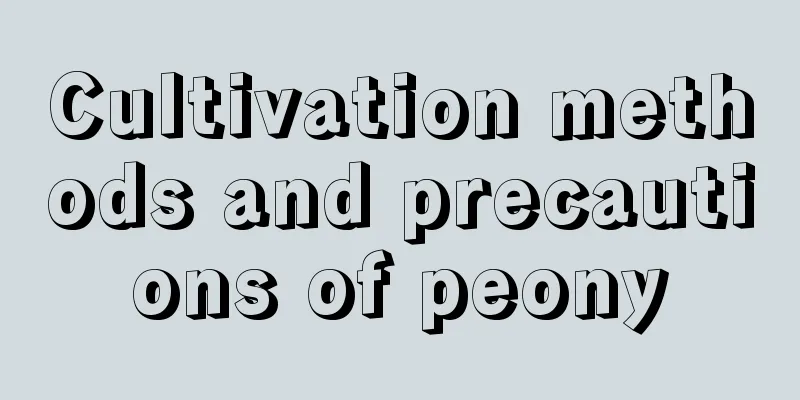Cultivation methods and precautions of peony

1. Maintenance methods1. Temperature: It has a very strong adaptability to temperature. In winter, it can withstand temperatures as low as minus fifty degrees Celsius. In summer, if the temperature reaches 38 degrees, it will not affect its normal growth and flowering. However, the most suitable temperature is between fifteen and twenty-five degrees. 2. Light: It prefers sunlight. Generally speaking, when it is growing fast and before and after flowering, it needs to be placed in a sunny location so that it grows well and blooms more. However, it needs to be placed in a shaded location in summer, as too strong light will burn its leaves. 3. Watering: It likes moisture, but too much waterlogging will have adverse effects. During the growing and flowering periods, it needs to be slightly moist. However, water must not accumulate and drainage is required during the rainy season. Furthermore, when the temperature is low, do not water too much. 4. Fertilization: Pay attention to the richness of nutrients. Generally speaking, the best ratio of nitrogen, phosphorus and potassium is two to two to one. In addition, it is best to water after fertilizing. 2. Breeding techniques1. Reproduction: The material used for the reproduction of peony is its foot bud root segment. The foot bud refers to its white fleshy rhizome. These can be found in the soil layer thirty centimeters below the ground. It can be done in spring and autumn, and after digging them out, they can be planted. Some base fertilizer needs to be mixed into the substrate in advance. After planting, keep the temperature suitable and it will germinate in about ten days. 2. Pruning: The most important thing is pruning after flowering. Because the dry branches left after flowering will be very long, affecting subsequent growth. In addition, diseased, insect-infested, and redundant lateral branches need to be pruned in time to prevent them from affecting the overall health. 3. Problem diagnosis and treatment1. Disease: There may be the harm of "root rot", which is most likely caused by too much watering. It can be controlled by carbendazim and oxadiazon. There are also "leaf spot disease" and "brown spot disease", which can be treated with chlorothalonil. 2. Pests: In summer, there are many pests. For example, there are "termites", "grubs", "leaf rollers", etc. You can spray some insecticides regularly for prevention and control. IV. Other issues1. Toxicity: It is not poisonous and does not emit harmful gases. 2. Can it be raised at home? It has good ornamental value and is a good choice for home decoration. |
<<: Cultivation methods and precautions of blood-replenishing grass
>>: Cultivation methods and precautions of Andrographis paniculata
Recommend
Red flesh apples bear fruit in several years
Introduction to growing red flesh apples Red-fles...
How to grow Christmas cactus? Can Christmas cactus be grown hydroponically?
1. How to grow Christmas cactus 1. Soil: When car...
Impatiens growth process
1. Germination Impatiens is usually sown in sprin...
Differences between Cotinus coggygria and Cotinus coggygria
1. Tree shape difference The crown of the Cotinus...
How many days does cyclamen last to bloom?
1. How many ceilings are open As long as cyclamen...
Can roses survive in summer? How to plant them?
1. Can it survive in summer? Although the tempera...
How to grow potted succulents to make them strong? How to grow small succulents
Succulent potted plants basically refer to potted...
How to grow lotus with dried lotus seeds
1. Can it be grown? Dried lotus seeds are lotus s...
Do potted watermelons need artificial pollination?
Potted watermelons need pollination Balconies, es...
How to grow Daphne odora in winter
Winter maintenance methods Placement After the De...
Why don't gardenias bloom?
1. Causes 1. The pH value of the soil is too high...
The role of yellow cicada
The ornamental value of yellow candy cane The yel...
Can cherries be potted?
Can cherries be grown in pots? Cherries can be pl...
Cultivation methods and precautions of jade ornaments
The succulent plant Jade Pendant is not only beau...
What fertilizer should be used to fertilize lucky bamboo so that it can grow luxuriantly? Does it need nutrient solution?
If you want lucky bamboo to grow well, you must f...









